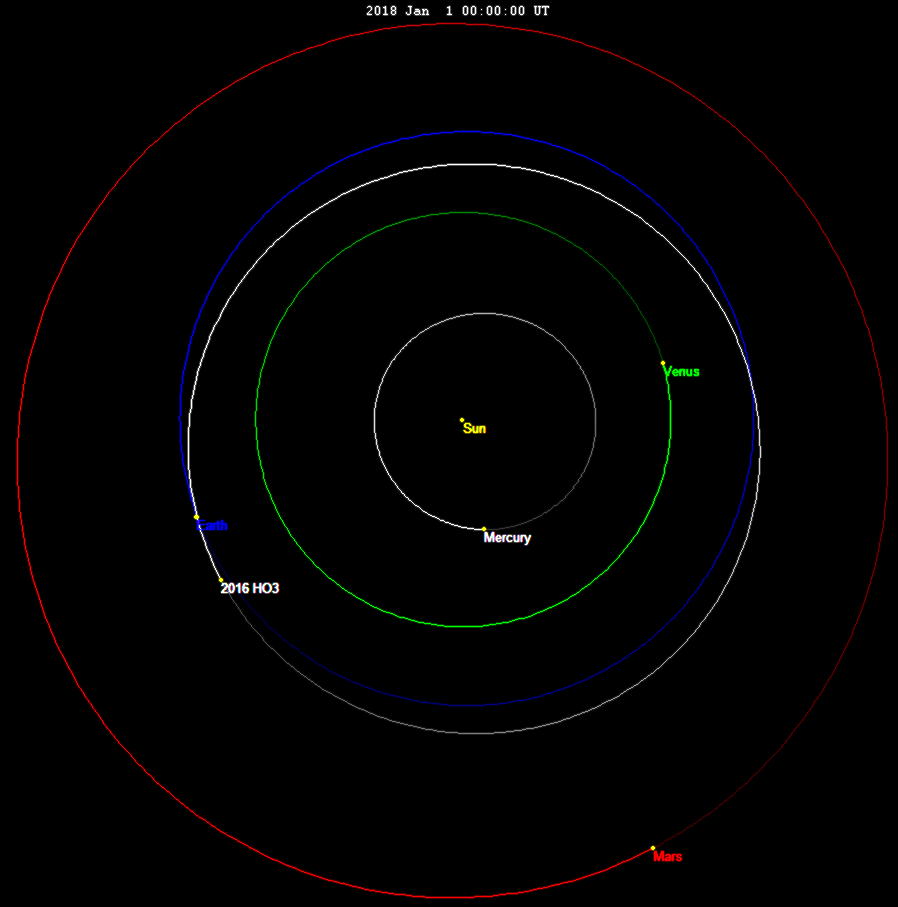A scenario has been identified that explains how the near-Earth asteroid Kamo’oalewa could have been knocked off the Moon and become what is known as a quasi-satellite.
In the last two decades, astronomers have discovered the Earth is accompanied through space not only by the Moon and the items we have put into orbit, but objects known as quasi-satellites. Quasi-satellites represent one of three categories of objects that co-orbit with our planet, also taking a year to journey around the Sun, but on a more elongated path. Their orbits are tied to our own to the extent that they never get all that far away from Earth, at least until they shift into a different type of co-orbit.
Among the quasi-satellites, Kamo’oalewa is possibly the most interesting, which is why China aims to land a spacecraft on it, launching in 2025. First discovered in 2016, at 45-60 meters (150-190 feet) long, it’s larger than the others and its orbit is more stable. Even though it currently never gets further than 10 times the distance of the Moon away from us, it’s only detectable by even the largest telescopes briefly each year. At other times it’s too far away, or too close to the direction of the Sun.
Kamo’oalewa’s orbit keeps it always close to the Earth, but sometimes a little closer to the Sun and sometimes further away.
Two years ago, evidence was presented that Kamo’oalewa’s spectrum is the same as some Moon rocks, rather than the silicate asteroids it first appeared to resemble. The team who discovered this speculated it had been knocked off the Moon when some larger asteroid crashed into our companion. Nevertheless, even the authors of that paper admitted to considerable doubts, and merely considered the idea more likely than any alternatives they could propose.
Now the case for Kamo’oalewa’s lunar origins has been strengthened with an explanation of the circumstances in which an object could have been knocked off the Moon and reached its current orbit.
It’s not unusual for an object to hit the Moon with such force that it launches pieces into space. We’ve found meteorites that match the Moon rocks brought back by Apollo astronauts as a result. The same thing happens to the Earth, despite a protective atmosphere and much larger gravity to overcome. However, the fragments would seldom end up in orbits similar to our own, and no one was sure if this was even possible.
By modelling a large array of incoming speeds and the locations where an asteroid might hit, however, a team led by Dr Aaron Rosengren of the University of California, San Diego showed it can happen. They found a 6.6 percent chance conditions would be right for the product to be co-orbital with the Earth and Moon, most likely from an object hitting the Moon’s trailing hemisphere at just above the minimum speed required for ejecta to escape lunar gravity. To become a quasi-satellite like Kamo’oalewa was less likely, however, at just 0.8 percent chance.
Although a slim chance, that makes Kamo’oalewa’s lunar origins plausible, while an origin in the asteroid belt would be even less probable. A successful landing and sample collection would not only confirm Kamo’oalewa was once part of the Moon, but potentially match it to the exact crater it comes from, and therefore tell us its age.
Meanwhile, this work may help us identify how likely it is that Kamo’oalewa, and perhaps other quasi-satellites we have yet to discover, will escape their existing orbits and pose a hazard to the Earth. In 300 years, it is expected that Kamo’oalewa will transition to a different class of co-orbit, known as a horseshoe orbit, although it is expected to eventually become a quasi-satellite again.
“We need more information to say with certainty that Kamo’oalewa is indeed a fragment of the moon,” Rosengren said in a statement, “And a space mission to this unique celestial body is warranted.”
The study is published in Communications Earth & Environment.
Source Link: How A Piece Of The Moon Became Earth’s Quasi-Satellite Kamo'oalewa
